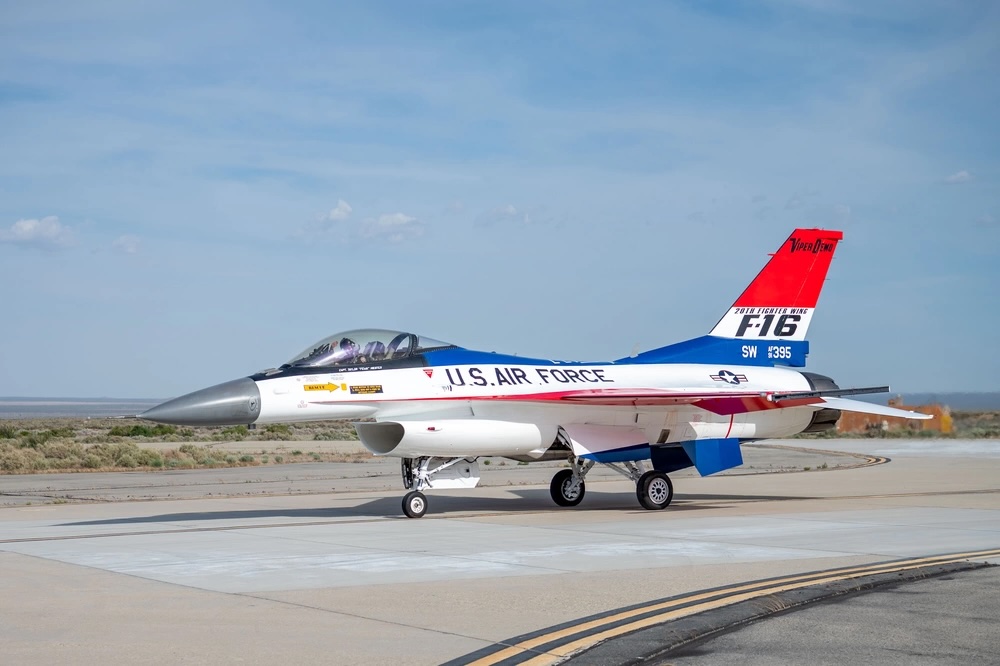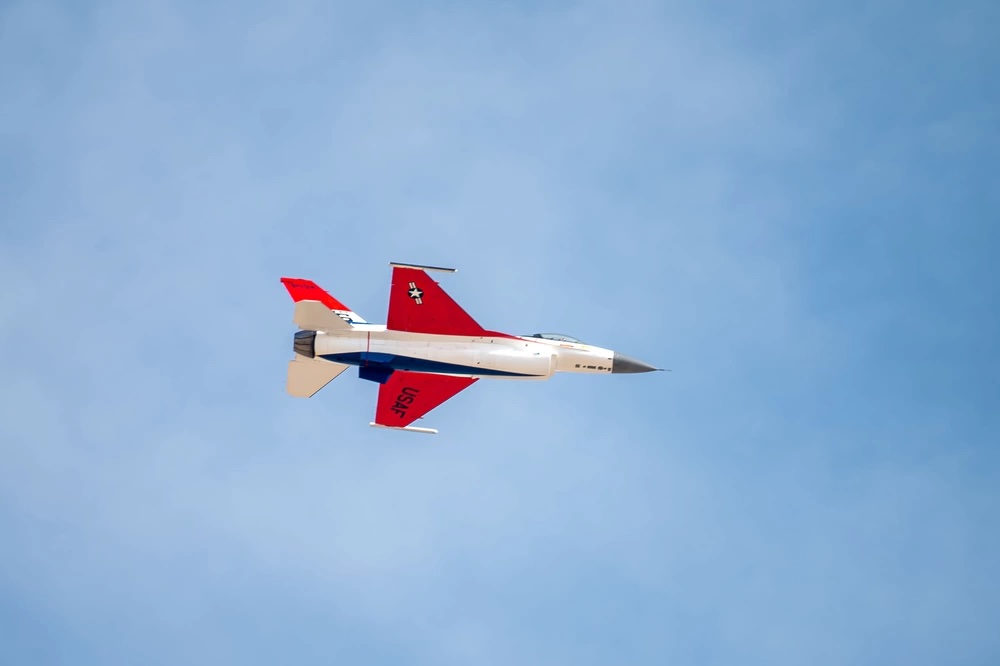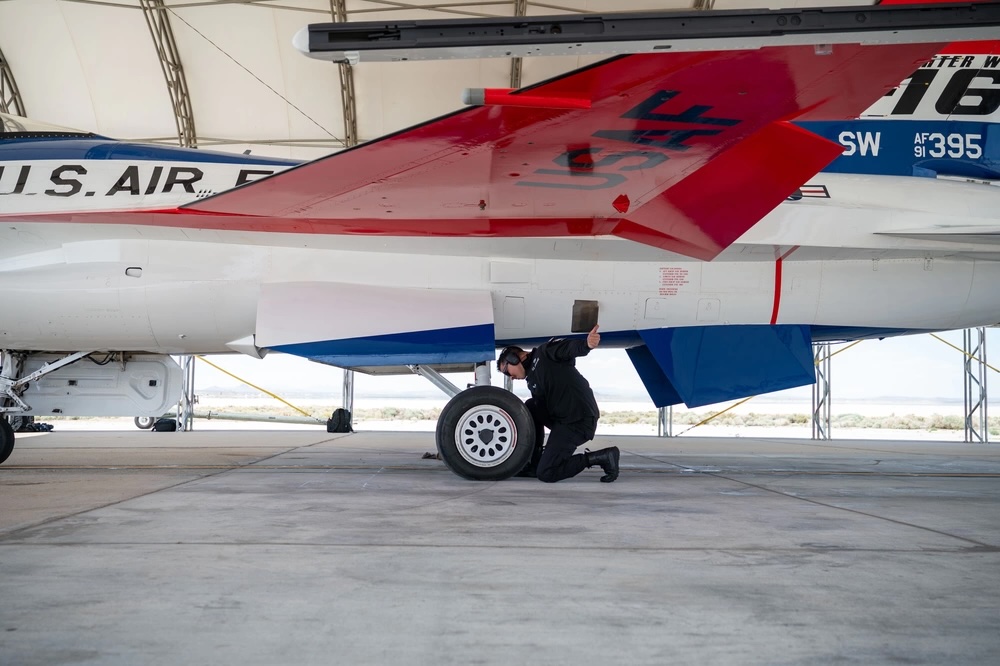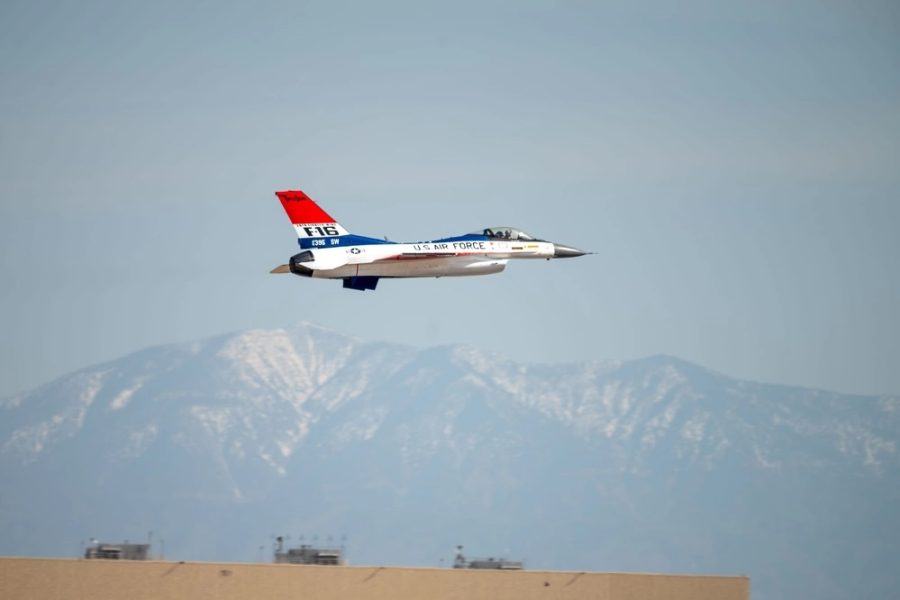The Air Force F-16 Viper Demonstration team rolled out a new paint job on May 15 celebrating the 50th anniversary of the first flight of the YF-16, the prototype that took off by accident from Edwards Air Force Base, Calif. on Jan. 20, 1974. The demo jet features the same iconic red, white, and blue livery as the YF-16, but with a few changes such as “Viper Demo” and “20th Fighter Wing,” the team’s home unit at Shaw Air Force Base, S.C., written on the tail.
Usually a paint job like this would take about three months, but the demo team and the Edwards-based 412th Test Wing managed to do it in less than eight weeks, according to a press release.
“When I was hired to be the commander and pilot in the summer of last year, I had made it known that I hoped to find a way to get our airplane painted in the prototype scheme to take America back to the beginning of the story that started 50 years ago,” Capt. Taylor Hiester, the demo team leader, said in the release.

The new paint job comes about four months after Edwards painted the tail of one of its F-16s in the same colors, also in celebration of the jet’s first flight.
“These custom flashes represent the 50-year legacy of both the F-16 and the 416th Flight Test Squadron team who ensure the Viper remains a dominant presence for decades to come,” the California base wrote in a Jan. 22 Facebook post.
Tony Accurso, a logistics manager for the 416th Flight Test Squadron who directed the F-16 50th Anniversary event at Edwards, served as a historical advisor for the demo team’s paint project. The 412th Test Wing’s corrosion shop used archival imagery to re-create each detail of the original paint scheme.
“Everyone at Edwards has a big sense of pride for not only supporting the Viper Demo Team but also celebrating the 50th anniversary of the F-16 which began right here at Edwards in 1974,” he said in the release.

Photos released by the base show Hiester taking the newly-painted jet for a spin over Rogers Dry Lake. Half a century earlier, that same lake saw General Dynamics test pilot Phil Oestricher take the YF-16 down the runway for a high-speed taxi test. The aircraft reached a speed at which it became unstable, with its wingtips hitting the runway and throwing off sparks. Oestricher decided the safest thing to do was to take the jet into the air, where he flew a six-minute circuit before landing.
After a tune-up, the jet made its first formal flight on Feb. 2, 1974, but an investigation commended Oestricher for saving the prototype, according to Edwards.
In a 2012 interview with Lockheed Martin, the pilot said he had always intended “to put a little bit of daylight under the wheels, maybe a foot or two, fly it about a thousand feet down the runway, and land it, and in the meantime checking out the lateral or the roll response sensitivity.”

In the years since, the F-16 has proven itself an adept platform in air-to-air combat, close air support, suppression of enemy air defenses, and aerial acrobatics, as proven by the Air Force Thunderbirds and the Viper Demonstration Team. The team has a history of eye-catching paint jobs: in 2020, they unveiled ‘Venom,’ featuring a snakeskin pattern across the wings and fuselage and yellow snake eyes near the cockpit.
Like Venom, the new YF-16 paint job will no doubt turn heads at the 25 shows the team will perform across four countries this year.
“The only way that we were able to get started was with the support of the leadership at the 20th Fighter Wing, the home of the F-16 Viper Demonstration Team, who believed in the importance of this project and supported the vision that we had in mind,” Hiester said.
